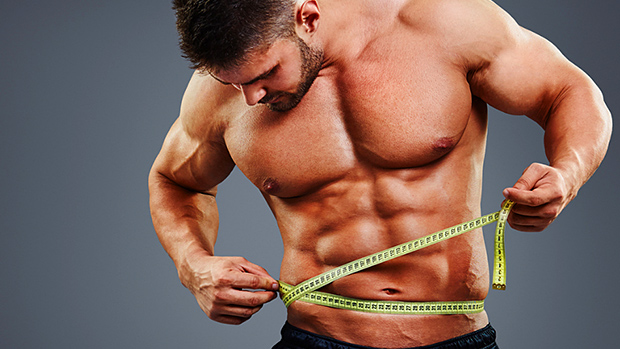A Headless Lee Priest
I saw professional bodybuilder Lee Priest sitting in a refrigerated bin at the grocery store today. It's the off-season, so he was his famously plump, off-season self. Oddly, his short, pink body was totally naked, but I figured it might be something Australians do to literally chill out.
That's when I noticed that, oh-my-God, Lee Priest didn't have a head! Still, it wasn't until I took this headless Lee Priest home, barbecued him, and bit into his enormous, succulent thigh that I realized that Lee Priest was really just a grocery store chicken.

I remember chickens being a lot smaller. What the hell has happened to chickens to make them look like they could compete, albeit headless, in the short man class at a professional bodybuilding show? And what has all that perverse animal husbandry done to their nutritional content, if anything?
The Chicken of Tomorrow
Back in the 1920's, chickens were too scrawny to eat and were used primarily for egg production, but some time in the 1940's scientists discovered that antibiotic-laced feed caused chickens to grow 2.5 times faster and a lot bigger.
Then there was that damn "Chicken of Tomorrow" contest in 1948, the one sponsored by the U.S. Department of Agriculture and designed to find America's biggest chicken. They found it, alright, and that chicken and all its cross-bred, antibiotic fueled progeny resulted in the giant creatures we see today.
Case in point, today's average chicken is four times bigger than a chicken from the 1950's. Chicken breasts are 80% larger. They don't even bother making chicken underwear in S, M, or L anymore. It's double XL or triple XL or nothing.
While these advances have made chicken universally available and cheap, they've come at a nutritional cost.
One-Third Less Protein
Compared to a 1940's chicken, today's behemoths have twice the fat, about one-third more calories, and even one-third less protein. In fact, the modern chicken provides more energy from fat than it does from protein.
And the fat the modern industrial chicken does have has been horribly mucked up because they're fed grains instead of grass. Chickens are one of the few land-based sources of the essential fatty acid DHA, but today's typical mass-produced, soy-eating chicken has less than 25 mg. of the stuff, compared with about 170 mg. in a 1980's chicken. That gives chicken a 1 to 15 omega-3 to omega-6 ratio, when ideally you'd like to see a ratio of 1 to 5 or lower.
But the worst part of the Frankenchicken is what it carries with it.
Massive, Antibiotic-Resistant Infections
Today's industrial chicken takes an ice bath in chlorinated water after it's killed, but it doesn't kill all the bacteria. Hardly. In 2013, Consumer Reports tested 316 packages of chicken breasts from stores across the country and found that 97% of them carried Salmonella, Campylobacter, and Enterococcus, among others.
Remember all those antibiotics they fed to chickens? Many strains of bacteria living in chickens developed immunity to them. That prompted major chicken growers – at the behest of consumer groups – to stop using antibiotics, but it was largely too late because the super bacteria live on and are passed from chicken generation to chicken generation.
Chances are, many of these antibiotic-resistant strains have found new haunts in your digestive system, where they're content to live until you're weakened by illness or life circumstances, whereupon they pounce and can cause a massive, antibiotic-resistant infection.
To make it worse, there's evidence you can transmit these bad-boy bacteria to other people by both intimate and casual contact.
What to Do
Giant Lee-Priest chickens are likely here to stay, but there are things you can do to turn back the chicken clock and eat birds that are more like those of a safer, more nutritious, bygone age:
- Buy organic chickens. They haven't been raised on antibiotics, and there's a theory that the antibiotic-resistant bacteria in your gut will diminish if you aren't continually exposed to them.
- For better omega-3 profiles, buy "free range" chickens. This means the chickens had some access to some sort of pasture and presumably ate grasses and bugs – things that cause the bird to develop desirable levels of omega-3 fatty acids and give it a 1-to-5 omega-3 to omega-6 ratio.
- Don't bathe your chickens. The impulse, when working with raw chicken, is to rinse it off under the sink, but this practice probably causes the entire kitchen to be sprayed with a bacterial frappe. Don't do it. Instead, trust the heat of the stove, oven, or barbecue to kill all those suckers.
Sources
- Gorman, Rachel Moeller, "The Scary Truth About Chicken," Men's Health, December 10, 2014.
- Wang Y, Lehane C, Ghebremeskel K, Crawford MA. "Modern organic and broiler chickens sold for human consumption provide more energy from fat than protein," Public Health Nutr. 2010 Mar;13(3):400-8.



